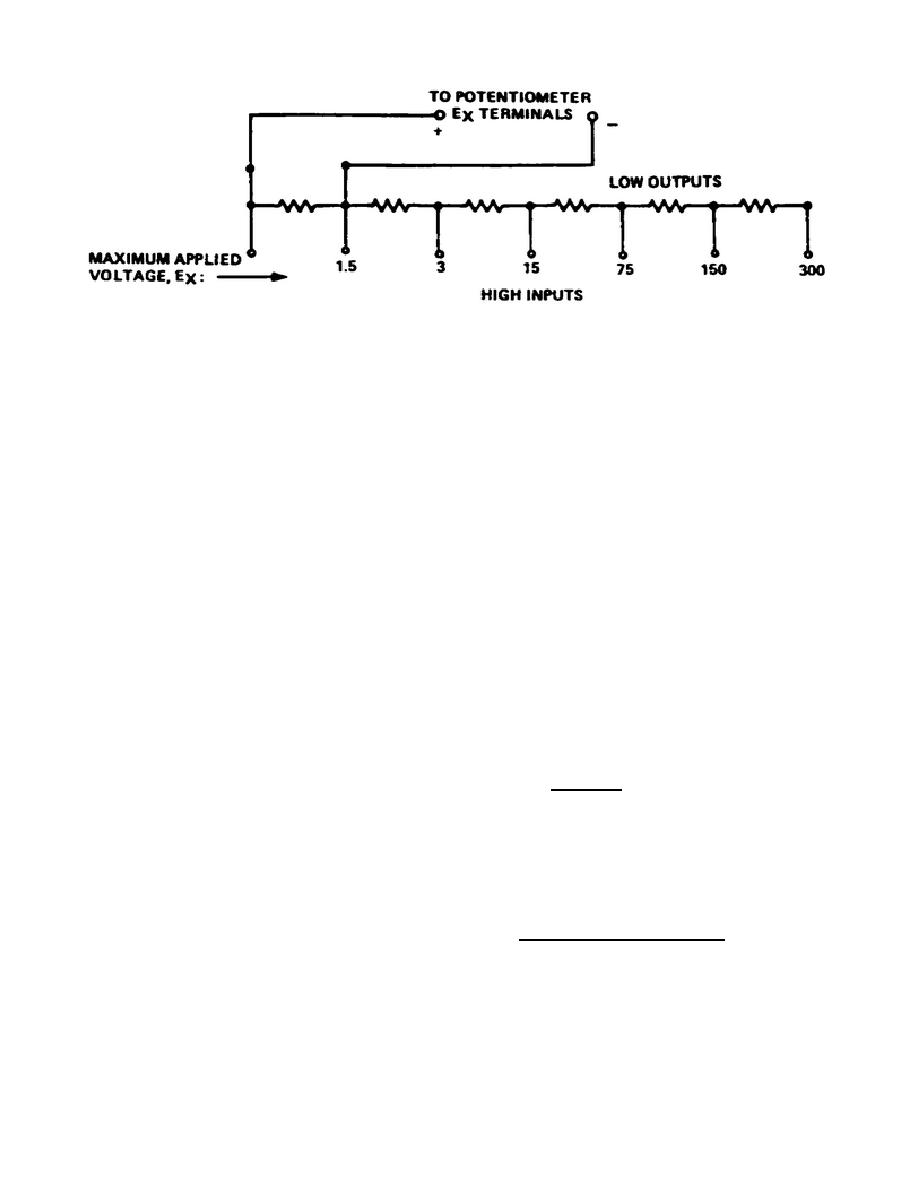
Figure 1-5.
Volt box
2.
The volt box is a series string of resistors with the tie points
connected to binding posts. Range selection is accomplished by applying the
voltage to be measured to the appropriate binding post or by a switch
connected to the tie points. The voltage to be measured is applied across
the series resistors and a lower voltage, tapped from one of the tie points,
is measured by the potentiometer.
3.
The voltage to be measured is applied to one of the connections that
is equal to or greater than its value.
The output applied to the
potentiometer is taken from a binding post that is within its measuring
range. Although this system is sufficiently accurate for most applications,
it should be noted that the voltage divider consumes power from the source
even when the potentiometer is at null, and therefore may produce lower
readings due to the loading effect.
This effect can be reduced by using
high ohmic value resistors to make up the series of the volt box.
4.
To employ the standard potentiometric measuring technique, we must
first obtain a multiplication factor. To obtain the multiplication factor
of the individual input binding posts, you simply divide the maximum EMF of
the high binding post in use by the maximum of the low binding post in use.
Or stated as a formula:
multiplication factor = EMF max
EMF min
a. We also use the multiplication factor to determine the approximate
voltage present at the low EMF terminal when a voltage other than the
maximum is applied to the input binding posts. To make this determination,
divide the applied voltage by the multiplication factor, or simply:
approximate output =
applied voltage
multiplication factor
7



 Previous Page
Previous Page
